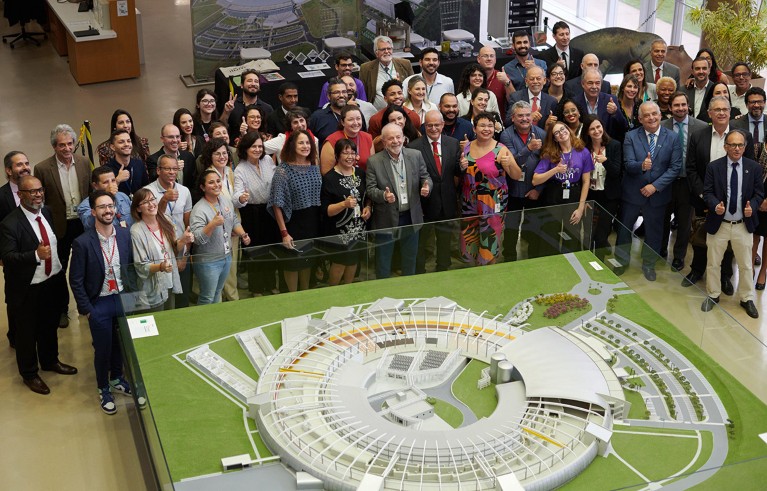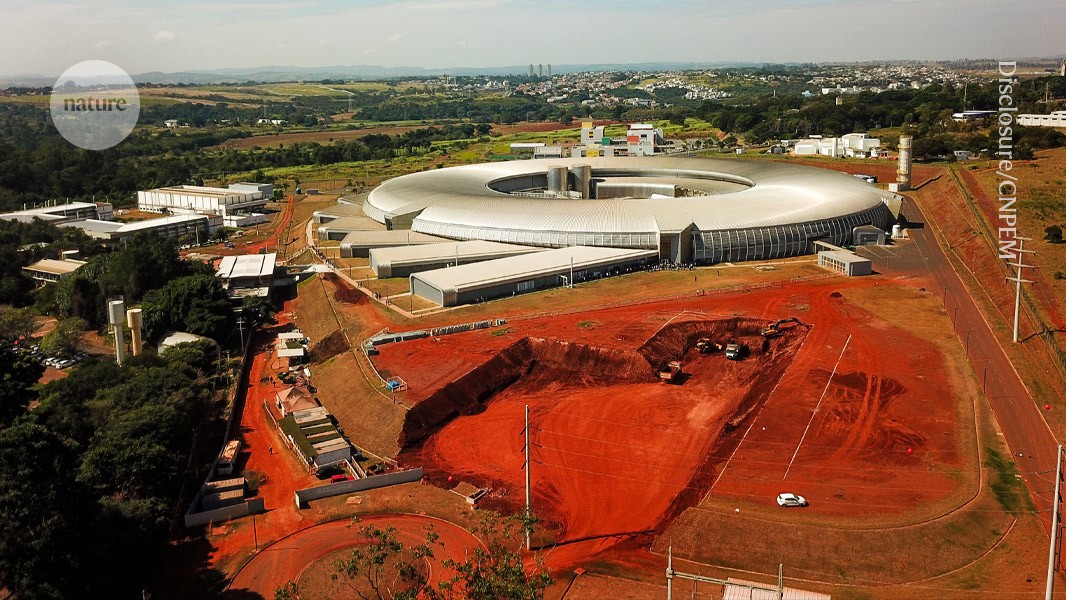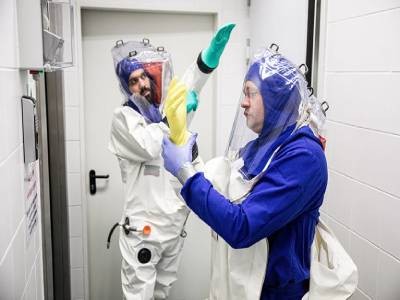Last month, Brazil celebrated breaking ground on what it hopes will become the first maximum-security biosciences laboratory in Latin America. Many researchers are excited at the prospect of a facility where they can safely study the most dangerous pathogens in the region. However, some wonder about the cost of maintaining such a lab and are concerned about the pushback they are sure to receive from members of the public over housing deadly organisms there.
The need for a biosafety-level-4 (BSL-4) laboratory in Brazil is unquestionable, says Flávio Fonseca, a virologist at the Federal University of Minas Gerais in Belo Horizonte, Brazil. “We have seen the number of epidemic, even pandemic, outbreaks increase in the last 100 years,” he says. When an outbreak happens, researchers want to be able to work safely with the live virus to understand it and to develop vaccines and treatments.
“We’re sitting on a powder keg” in terms of pathogens that might emerge in Latin America, says Fernando Spilki, a veterinary virologist at Feevale University in Novo Hamburgo, Brazil, agreeing that such a facility is necessary. In particular, humans are clearing more and more of the Amazon rainforest for agriculture and other uses, and so are frequently coming into contact with animals that can harbour previously unknown viruses. And climate change is driving some species out of remote locales and into more populated areas. “We need a laboratory like this so we can give quick responses” to these challenges, Spilki says.
A first for Latin America
The lab, dubbed Orion, is being constructed at the Brazilian Center for Research in Energy and Materials (CNPEM) in Campinas, about 100 kilometres northwest of São Paulo, and is scheduled to be complete by 2026 and operational by 2028. It will also host lower-level biosafety labs, including BSL-2 and BSL-3 facilities.
BSL-4 labs are the most secure of the bunch. In these facilities, isolated from the others, researchers work with pathogens that can be transmitted through the air, that are deadly and for which there are no vaccines or treatments. Scientists must shower and change clothes before entering and leaving; while they are in the labs, they wear specially designed suits connected to a separate air supply.

Brazilian President Luiz Inácio Lula da Silva (centre, in grey jacket) joined CNPEM staff members on 4 July to dedicate the first stone for Orion.Credit: Igor Do Vale/ZUMA via Alamy
According to a report last year by the Global BioLabs initiative, run by researchers at George Mason University in Fairfax, Virginia, and King’s College London, there are 51 BSL-4 labs in operation around the world. Around 70% are in Canada, Europe or the United States. Another 18 are in planning or under construction, including Orion, which is the only one in Latin America.
Having a BSL-4 lab in Brazil could mean more autonomy for the country’s science, Fonseca says, allowing researchers to study local pathogens and develop treatments domestically, rather than travelling to labs elsewhere to do research and then queuing to receive diagnostic tests and vaccines. Five haemorrhagic-fever-causing arenaviruses — which can be studied only in a BSL-4 lab — have been detected in South America. In particular, Sabiá virus was first reported in São Paulo.
Challenges ahead
Once construction on Orion is complete, it will be the first BSL-4 facility in the world equipped with a synchrotron: a particle accelerator that produces high-powered radiation for imaging. Scientists will be able to use three X-ray beamlines derived from the CNPEM campus’s existing synchrotron, Sirius, to reveal the structures of pathogens and the dynamics of how they infect cells, tissues and small organisms.
COVID prompts global surge in labs that handle dangerous pathogens
Connecting the beamlines to a maximum-containment laboratory will, however, be a challenge, says Harry Westfahl, director of the Sirius facility. The beam hardware will need regular calibration and maintenance, so will have to be outside the BSL-4 part of the lab. But “we found a solution”, he says. The beams will pass through an optically transparent recess in a wall separating the synchrotron from the max-security lab. The hardest part, Westfahl says, has been designing that recess so that it is an effective barrier, can stand up to the disinfection required in the BSL-4 facility and is of sufficient optical quality to minimize interference with the precision of the incoming beams.
Another challenge for Orion will be training staff members to work in a type of facility that is new for the region. The facility must also develop a regulatory framework to ensure that risky experiments have oversight from a governing panel, and must install security measures to prevent unauthorized access by people or organizations that might intentionally release pathogens, says Gregory Koblentz, a biodefence specialist at George Mason University and a co-author of the 2023 Global BioLabs report.
Tatiana Ometto, the CNPEM’s high-containment biosafety specialist, acknowledges that Brazil doesn’t yet have an oversight mechanism for BSL-4 experiments. “But with Orion, discussions are taking place,” she says. “The Ministry of Health has created a working group to follow, monitor, assess and propose directives for the lab’s development.”
Concerns about proper biosafety and security at such labs have become heightened since the start of the COVID-19 pandemic. The first cases of infection with the coronavirus SARS-CoV-2 were spotted in Wuhan, China, where researchers at the Wuhan Institute of Virology were studying coronaviruses gathered from bats. Although much scientific evidence points to SARS-CoV-2 being passed from a wild animal to humans, some scientists say that an accidental leak from a lab can’t be ruled out.
Biosecurity concerns are important at all BSL-4 labs globally, not just in Brazil, says Juliette Morgan, South America regional director for the US Centers for Disease Control and Prevention, who is based in Brasília. She points out that the CNPEM team has “a very clear understanding of the implications of a BSL-4” lab and has been seeking advice to fill any gaps.
Lab maintenance
The cost of the lab has also been a point of concern. The Brazilian government is investing $1 billion reais (about US$180 million) into Orion’s construction.
“There’s no doubt about the need for a laboratory of this kind in Brazil,” says Odir Dellagostin, president of the Brazilian National Council for State Funding Agencies. “But we lack the funds for other very important research” projects, he adds. In particular, he says, maintaining the facility will be very expensive. In 2022, Thomas Ksiazek, head of high-containment operations at Galveston National Laboratory, a BSL-4 facility in Texas, told Nature that his lab required almost US$12 million a year for maintenance and operations — $2 million of which was spent on 24-hour security.
CNPEM director Antônio José Roque da Silva says that Orion is less expensive to build than other BSL-4 facilities. “The average cost of a lab like this in the United States is about a billion dollars,” he says. “We’re using one-fifth of that to build one that will allow greater research autonomy.” He does admit, however, that maintenance will be a burden. CNPEM, he adds, is seeking funds from other ministries and sources now to “build a resilient system”.



